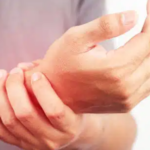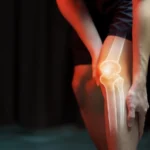
Joint flexibility and strength are crucial elements of overall mobility and quality of life. Modern lifestyles, characterized by long hours of sitting and minimal physical activity, often lead to joint stiffness, muscle weakness, and various orthopedic issues. Adding activities like yoga and Pilates to daily routines can offer significant benefits for joint health, flexibility, and strength. People with expert orthopedic surgeons, such as Dr. Harshad Jadhav in Mumbai, can get proactive help to improve the health of their joints.
The need for flexibility and strength
Flexibility refers to the ability of a joint to achieve a given range of motion. Strength is how much the muscles surrounding a joint can bear and help support and stabilize it. Weak muscles or poor flexibility lead to the following:
1. Poor flexibility and weak muscles
2. Poor mobility.
3. Increased likelihood of injury.
4. Chronic pain in the back, knees, and shoulders
6. Arthritis and osteoporosis
Yoga and Pilates are increasingly known for their capacity to help individuals. with joint problems in a holistic way; therefore, it is highly recommended for long-term joint care.
How Yoga Improves Joint Flexibility and Strength
This practice is an ancient form that combines physical postures with mindful awareness of breath and its patterns, and it helps greatly for joint flexibility and strength through deliberate slow movements and stretches.
Flexibility: The muscle tone around the joint is lightly stretched through exercises such as Downward Dog, Cat-Cow Stretch, and Cobra, thus it tends to reduce the stiffness as well as improve the joint’s motion range.
Stronger Joints: End
Poses like Warrior, Chair, and Tree engage muscle groups, which strengthens and stabilizes them. This is especially helpful for weight-bearing joints such as the hips, knees, and ankles.
Improved Blood Flow:
Yoga increases blood flow to the joints, bringing much-needed nutrients and oxygen, which aids in the healing and maintenance of joint cartilage.
Reduced Stress:
Stress is a well-known contributor to muscle tension and joint pain. Yoga helps to alleviate stress through mindfulness and relaxation, thereby indirectly benefiting joint health.
How Pilates Benefits Joint Health
Pilates is a low-impact exercise system that focuses on core strength, balance, and controlled movements. It complements yoga by offering targeted benefits for joint flexibility and strength.
Core Stability:
A strong core supports the spine and pelvis, reducing stress on joints during daily movements. This is especially important for people with lower back or hip issues.
Improved Alignment:
Pilates emphasizes proper posture and alignment, which prevents undue stress on joints and enhances overall movement efficiency.
Controlled Strengthening:
Exercises like Leg Circles, Side Kicks, and Plank in Pilates strengthen stabilizing muscles around joints without placing excessive strain on them.
Injury Prevention and Rehabilitation:
Pilates are also used in rehabilitation clinics to help patients recover from injuries. For patients who undergo orthopedic surgeries, they can seek the expert advice of a doctor like Dr. Harshad Jadhav, an orthopedic surgeon in Mumbai, as he can help them navigate how to incorporate Pilates into their routines safely.
Yoga, Pilates, and Orthopedic Health
Most orthopedic problems are due to lifestyle choices, aging, or underlying medical conditions. The regular practice of yoga and Pilates prevents these problems and also acts as a supplementary therapy for existing joint problems.
Patients with arthritis, tendonitis, or post-surgical stiffness can benefit greatly from these practices. However, proper guidance is essential. In Mumbai, Dr. Harshad Jadhav, an accomplished orthopedic surgeon, guides patients on how to incorporate such practices safely, thereby preventing overstretching or overloading of the joints.
Tips for Getting Started
Consult a Specialist: Meet an orthopedic surgeon like Dr. Harshad Jadhav before starting yoga or Pilates to check the health of your joints and their readiness for these exercises.
Start Slow: Begin with beginner-friendly classes or exercises to allow your body to adapt gradually.
Focus on Form: Proper form is essential to avoid injuries. Consider working with certified instructors.
Consistency is the Key: Practice best results when done regularly. Try to have at least 2-3 sessions per week.
Listen to Your Body: Never push through the pain, which may be an indicator of possible injury or overuse.
Conclusion
Yoga and Pilates are a natural way to enhance joint flexibility and strength. Focusing on mindful movement, alignment, and muscle engagement will ensure all-around care of the joints, thus lowering the chances of injuries and improving mobility. For the people of Mumbai, advice from Dr. Harshad Jadhav, a highly qualified orthopedic surgeon, can guide them to customize these practices for their particular joint health needs. This practice ensures healthier joints and helps lead an active and fulfilling life.




